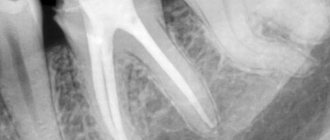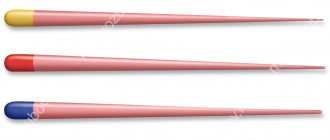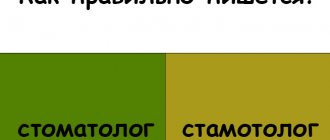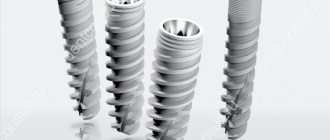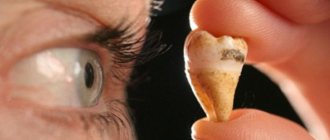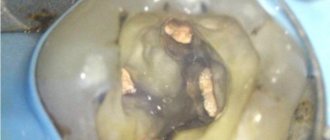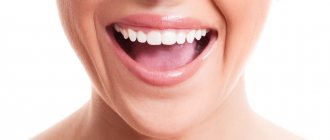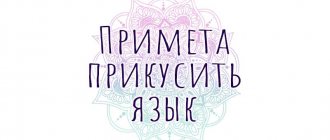Trees of the genus Palaquium and latex from their sap.
| This article requires additional links for verification . |
Palaquium gutta
Gutta-percha
is a tree of the genus
Palaquium
in the family Sapotaceae.
The name also refers to the rigid, naturally biologically inert, elastic, electrically non-conductive, thermoplastic latex obtained from tree sap, specifically Palaquium gutta
; it is a polymer of isoprene that forms a rubber-like elastomer.
The word gutta percha
comes from the plant's name in Malay:
getah
translates to "latex".
Percha
or
percha
is the old name for Sumatra.
From a scientific point of view
What is the meaning of the word "gutta-percha"? From a scientific point of view, this material was classified in 1843 and classified as a useful natural thermoplastic. In the second half of the 19th century, gutta percha was used for a variety of domestic and industrial purposes.
In particular, this material was needed as an insulating substance for submarine telegraph cables. Long before gutta percha was introduced into the Western world, it was used in a less processed form by the natives of the Malaysian archipelago to make knife handles, walking canes and other purposes.
The first European to discover this material was John Tradescant, who discovered it in the Far East in 1656. He called it "Mather's forest." Dr. William Montgomery, a medical officer in the Indian Service, introduced gutta-percha into practical use in the West. He was the first to recognize the potential of this material in medicine, and in 1843 he was awarded the gold medal of the Royal Society of Arts in London.
An effective replacement for old methods
“Guttah” is translated from Malaysian as “resin”, “pertja” is the name of the plant itself, which grows in the Malay and Philippine Islands.
Hence the word gutta-percha. True, you don’t have to travel that far to get this material. In Russia, it is extracted from another plant - warty euonymus. Since the 70s of the twentieth century, this product, similar to rubber, began to be used in dentistry, in particular, gutta-percha pins and other methods using elastic resin are used when filling root canals.
Gutta-percha pins have a cone-shaped shape and different sizes, based on which they are marked with different colors from white to black. There are standard pins, which are used most often, and non-standard pins, which are larger.
However, it would be wrong to say that pins are made only from resin. Gutta-percha in the devices is 20%, with 70% zinc oxide, about 1% of a substance that makes the pin visible to x-rays, and a small percentage of dye and antioxidant.
Previously, dental canals were filled with paste, but it quickly dissolved and the tooth continued to decay. Gutta-percha has proven to be more effective for these purposes, so there are several methods using it:
- lateral condensation method;
- single pin method;
- vertical condensation method;
- thermoplastic obturation with the Termafil system.
The need for root canal filling usually occurs with pulpitis and periodontitis. The process occurs in several stages:
- cleaning teeth from caries;
- removal of the dental nerve;
- expansion and cleaning of channels;
- introduction of a sealer - a paste that fills microtubules;
- insertion of gutta-percha pins into the tooth cavity, filling and compaction of the pins;
- trimming excess parts of pins;
- installation of a temporary filling;
- after a control x-ray - installation of a permanent filling, restoration of the crown.
Gutta-percha tree
In Malaysia, the tree is known as "taban" and people there traditionally used the hardened sap ("hanah") to make items such as molded handles for tools and knives. This natural latex, also called gutta-percha, is a very valuable product.
Palaquium gutta trees grow 5-30 m in height and are usually up to 1.5 m in diameter. The leaves are evergreen, alternate or spirally arranged, simple, entire, about 8-25 cm long each. They are glossy green above and often yellow or bluish below.
The flowers appear in small clusters along the stems, each flower having a white corolla with four to seven (mostly six) sharp lobes. The fruit is an ovoid berry 3-7 cm in diameter, containing from one to four seeds. In many species it is edible.
In Australia, gutta-percha is the common name specifically used for the tree Excoecaria parvifolia, which produces an aromatic, heavy, dark brown wood. It is also called "northern birch". This particular species is not related to the genus Palaquium.
From a chemical point of view
What does gutta-percha mean? In the literal sense, it is made from gutta-percha. What kind of meterial is this from a chemical point of view? Its structure is a latex elastomer or a polymer made of isoprene or polyisoprene. While latex rubbers are amorphous in molecular structure, gutta-percha (transstructure) crystallizes, resulting in a stiffer consistency. Gutta-percha is an isoprene polymer that is soft when heated and can be easily cast into a variety of shapes that are precisely detailed.
Gutta-percha
Details Category:
GUTTA PERCHA
, hardened sap of some plants, ch. image of the Sapotaceae family (see Gutta-percha tree). The juice is extracted by tapping 12-15 year old trees. Until recently, gutta-percha was extracted in a predatory manner - by felling trees and collecting sap from cuts in the bark, which led to the merciless extermination of gutta-percha trees; gutta-percha is also obtained from leaves and branches by extracting juice from them with toluene, petroleum ether or carbon disulfide; There is also a method for producing gutta-percha by applying alkali to crushed leaves and branches under a pressure of 5 atm. The best varieties of gutta-percha are yellowish-red or yellow in color, the worst are dark in color. Gutta-percha is tasteless and has an unpleasant odor when heated. Specific gravity 0.960-0.999; Gutta-percha is somewhat heavier than water if the air is removed from it. The cubic expansion coefficient of pure gutta-percha at temperatures from 0 to 40° is 0.000496. In polarized light (especially under pressure), gutta-percha produces beautiful colors. Raw gutta-percha is wrinkled and under a microscope appears to be riddled with many irregularly shaped small voids; When rolling or pressing, a fibrous, low-porous structure is noticed. At 25° gutta-percha is leathery, flexible, low-elastic, at 40° it softens, at 45° it is doughy, at 62-65° it is soft and easily formed, stretches into threads, plates, tubes, at 100° it is sticky, melts at 150° into easily movable a liquid that gradually darkens when cooked.
Dry distillation of gutta-percha produces thickening vapors; The distillate is yellow in color, has an unpleasant odor and is a good solvent for gutta-percha; in addition to water, it contains mainly rubber, isoprene and heveene. Gutta-percha ignites easily and burns with a bright, smoky flame. When rubbed, gutta-percha is charged with negative electricity; fresh gutta-percha is a poor conductor of heat and electricity. Under prolonged exposure to light and air, gutta-percha attaches oxygen and turns into a crumbling white mass; such gutta-percha becomes a good conductor of electricity and becomes positively electrified when rubbed. On the contrary, protected from light in water, especially in sea water, gutta-percha does not lose its qualities. Dilute mineral acids and salt solutions have no effect on gutta-percha; concentrated H2SO4 destroys gutta-percha; HNO3 also quickly destroys gutta-percha, forming red fumes. Gutta-percha completely dissolves in chloroform and carbon disulfide at ordinary temperatures; in benzene, turpentine, kerosene it dissolves when heated, in alcohol or ether - only partially; In boiling water, gutta-percha absorbs water, becomes sticky and stretches into threads.
Pure gutta-percha, obtained by decolorizing a solution of purified gutta-percha in chloroform with animal charcoal and precipitation with alcohol, is a hydrocarbon of the formula (C10H16)n. Raw gutta-percha contains resins, minerals, sugars, proteins, tannins and the following three characteristic components: gutta up to 82%, alban 14-15% and fluaville 4-6%. The content of gutta determines the good properties characteristic of gutta-percha - plasticity at high temperatures, elasticity and stretchability.
For practical use, gutta-percha must satisfy known conditions that depend on the physical properties of purified gutta-percha: the ratio between gutta and other resins affects the softening temperature; electrical properties depend mainly on the quality of gutta, on the amount of pollutants and on water. First of all, physical and mechanical tests are of practical importance - for example, finding the strength coefficient, insulating capacity, inductivity, resistance to penetration by an electric spark, and the degree of ductility. Next comes chemical tests for acid resistance, moisture content, resins and dirt.
The use of gutta-percha compared to rubber is extremely limited. Gutta-percha is used as an insulating substance for submarine cables, for medical and dental purposes, for molding, and for special rubber compounds. Gutta-percha is vulcanized with sulfur in the same way as rubber, but products made from vulcanized gutta-percha do not have any special advantages over unvulcanized ones and are of no practical importance. Gutta-percha is much more expensive than rubber, its price reaches 10 rubles per 1 kg.
In the USSR, on the Black Sea coast of the Caucasus, several specimens of the Central Chinese tree Eucommia ulmoides Oliv., the leaves of which contain a gutta-percha-like substance, have been growing for many years. The interest of this tree for industrial purposes was noted back in 1889 by Dubovsky and later by Vernuccio. Research on the use of Eucommia for the production of gutta-percha is being carried out on the initiative of Rezinotrest by the Abkhaz People's Commissariat of Agriculture (at the Abkhaz experimental station in Sukhum).
Source: Martens. Technical encyclopedia. Volume 6 - 1929
- < Back
- Forward >
Use in dentistry
The same bioinertia that made gutta-percha useful for marine cables also came in handy for medical purposes, namely dentistry. This material is used in many surgical devices and in root therapy (obturation or filling the empty space within the root of a tooth after it has undergone endodontic therapy). Its physical and chemical properties, including inertness and biocompatibility, melting point, ductility and malleability, make it important in endodontics.
Historical use
Being biologically inert and stable, this type of latex is a good electrical insulator with a high dielectric constant. Wood of many types is also valuable. The properties of gutta-percha were noticed by the Western world only in 1842, although the local Malay aborigines had been using it for many centuries. Allowing this liquid (juice) to evaporate and coagulate in the sun produces a rigid latex that can be flexible again when heated, but is not brittle, unlike rubber made before the discovery of vulcanization.
By 1845, telegraph wires insulated with gutta-percha were being produced in Great Britain. Latex served as an insulating material for early submarine telegraph cables, including the first transatlantic telegraph cable. Gutta-percha was especially suitable for this as it was not attacked by the marine plants or animals that had damaged previous submarine cables.
The material was the main component of Chatterton joint, used as an insulating sealant for telegraph and other electrical cables. Since 1930, polyethylene has replaced gutta-percha as an electrical insulator.
In the mid-19th century, gutta-percha was also used to make furniture, notably founded in 1847. When heated, the material could be molded into furniture, jewelry, or tableware. Some of these decorative Revival pieces were shown at the Great Exhibition in 1851 in Hyde Park, London.
Uses [edit]
Historical[edit]
Manufacturing gutta-percha cable at the Telegraph Construction and Maintenance Company in Greenwich, London, c. 1865
Scientifically classified in 1843, it has proven to be a useful natural thermoplastic. In 1851, 30,000 long cwt (1,500,000 kg) of gutta percha were imported into Great Britain. [2]
In the second half of the 19th century, gutta-percha was used for many household and industrial purposes [3], and the word became a household word. In particular, it was needed as insulation for submarine telegraph cables, [2] which, according to author John Tully, led to unstable harvesting and power breakdown. [4]
According to endodontology
Harvey Weeks Felter and John Urie Lloyd:
Long before gutta percha was introduced to the Western world, the indigenous people of the Malaysian archipelago used it in a less processed form for knife handles, canes and other purposes. The first European to discover this material was John Tradescant, who collected it in the Far East in 1656. He called this material "Mather Wood". Dr. William Montgomery, a medical officer in the Indian Service, introduced gutta-percha to practical use in the West. He was the first to appreciate the potential of this material in medicine, and was awarded the gold medal of the Royal Society of Arts of London in 1843 [5].
Electrical [edit]
Gutta-percha latex is biologically inert, elastic and is a good electrical insulator with high dielectric strength. Wood of many species is also valuable. [ citation needed
]
Inventors discovered the Western properties of gutta-percha latex in 1842 through samples sent to England by William Montgomery,[ edit]
], although the people of its Malay habitat have used it for many applications for centuries.
(Faraday is quoted as having discovered its value as an insulator soon after the material was introduced to Britain in 1843. [6]) Allowing this liquid to evaporate and coagulate in the sun produced latex, which could again be made flexible by hot water. , but which did not become brittle, unlike rubber before the discovery of vulcanization. [ citation needed
]
By 1845, telegraph wires insulated with gutta-percha were being produced in Great Britain. It served as the insulating material for the first submarine telegraph cables, including the first transatlantic telegraph cable. [7] The material was the main component of Chatterton joint, used as an insulating sealant for telegraph and other electrical cables. [ citation needed
]
The dielectric constant of dried gutta-percha ranges from 2.56 to 3.01. The resistivity of dried gutta-percha ranges from 25 x 10 14 to 370 x 10 14 ohm-cm. [8]
Beginning around 1940, polyethylene replaced gutta-percha as an electrical insulator. [ citation needed
]
Other[edit]
In the mid-19th century, gutta percha was used to make furniture, notably by the Gutta Percha Company, founded in 1847. [2] Some of these revival style decorative objects were shown at the Great Exhibition of 1851 in Hyde Park. London. The company also produced various tableware. [ citation needed
]
The "guttie" golf ball (which had a hard gutta-percha core) revolutionized the game. [ citation needed
] Gutta percha was used to make "mourning" jewelry because it was dark in color and could be easily molded into beads or other shapes. Pistol grips and shoulder pads for rifles were also made from gutta-percha as it was hard and durable, but fell into disuse when synthetic plastics such as Bakelite became available.
Gutta-percha was used in canes and walking sticks. In 1856, U.S. Representative Preston Brooks used a gutta-percha cane as a weapon in an attack on Senator Charles Sumner. [9]
Today[edit]
Dentistry [edit]
The same bioinertness that makes it suitable for use in marine cables also means that it is difficult to react in the human body. It is used in various surgical devices and during root canal therapy. It is primarily a material used to obturate or fill the empty space within the root of a tooth after it has undergone endodontic treatment. Its physical and chemical properties, including but not limited to its inertness and biocompatibility, melting point, [10] ductility and malleability, make it important in endodontics, [5] for example in the form of gutta-percha points. Zinc oxide is added for reducing brittleness and improving ductility. Barium sulfate is added to provide radiopacity so that its presence and location can be verified on dental x-rays.
Modern use
It was also used to make mourning jewelry because it was dark in color and could easily be molded into beads or other shapes. Pistol grips and shoulder pads were also made of gutta-percha, which gave them strength and durability. The guttie golf ball, which had a hard gutta-percha core, revolutionized the game.
This material remained the main industrial product in the twentieth century, but later began to be gradually replaced by superior synthetic materials. Despite its long history, gutta percha is still used today. Modern dentists continue to use it to fill root canals.
An excerpt characterizing Gutta-percha
Balashev went further, according to Murat, expecting to be introduced to Napoleon himself very soon. But instead of a quick meeting with Napoleon, the sentries of Davout's infantry corps again detained him at the next village, as in the advanced chain, and the adjutant of the corps commander was summoned and escorted him to the village to see Marshal Davout. Davout was Arakcheev of the Emperor Napoleon - Arakcheev is not a coward, but just as serviceable, cruel and unable to express his devotion except by cruelty. The mechanism of the state organism needs these people, just as wolves are needed in the body of nature, and they always exist, always appear and stick around, no matter how incongruous their presence and proximity to the head of government seems. Only this necessity can explain how the cruel, uneducated, uncourtly Arakcheev, who personally tore out the mustaches of the grenadiers and could not withstand danger due to his weak nerves, could maintain such strength despite the knightly noble and gentle character of Alexander. Balashev found Marshal Davout in the barn of a peasant's hut, sitting on a barrel and busy with writing (he was checking accounts). The adjutant stood next to him. It was possible to find a better place, but Marshal Davout was one of those people who deliberately put themselves in the gloomiest conditions of life in order to have the right to be gloomy. For the same reason, they are always hastily and persistently busy. “Where is there to think about the happy side of human life, when, you see, I’m sitting on a barrel in a dirty barn and working,” said the expression on his face. The main pleasure and need of these people is to, having encountered the revival of life, throw gloomy, stubborn activity into the eyes of this revival. Davout gave himself this pleasure when Balashev was brought in to him. He went even deeper into his work when the Russian general entered, and, looking through his glasses at Balashev’s animated face, impressed by the wonderful morning and the conversation with Murat, he did not get up, did not even move, but frowned even more and grinned viciously. Noticing the unpleasant impression this technique produced on Balashev’s face, Davout raised his head and coldly asked what he needed. Assuming that such a reception could be given to him only because Davout does not know that he is the adjutant general of Emperor Alexander and even his representative before Napoleon, Balashev hastened to announce his rank and appointment. Contrary to his expectations, Davout, after listening to Balashev, became even more severe and rude. - Where is your package? - he said. – Donnez le moi, ije l'enverrai a l'Empereur. [Give it to me, I will send it to the emperor.] Balashev said that he had orders to personally deliver the package to the emperor himself. “The orders of your emperor are carried out in your army, but here,” said Davout, “you must do what you are told.” And as if in order to make the Russian general even more aware of his dependence on brute force, Davout sent the adjutant for the duty officer. Balashev took out the package containing the sovereign’s letter and placed it on the table (a table consisting of a door with torn hinges sticking out, placed on two barrels). Davout took the envelope and read the inscription. “You have absolutely the right to show or not show me respect,” said Balashev. “But let me point out that I have the honor to bear the title of His Majesty’s Adjutant General...”
"Gutta-percha": meaning
What is this concept? So, in the literal sense, gutta-percha is made from gutta-percha (natural rubber). In a figurative sense, this word has acquired a meaning associated with flexibility and elasticity. In relation to people, this definition began to be used and became a household name after D. V. Grigorovich wrote his sad story “The Gutta-percha Boy”.
This is a tragic story about a circus boy who was said to have no bones, he was so flexible and dexterous. From now on, people who are called gutta-percha are athletes with good stretching. It is achieved through long training. The gutta-percha woman is a gymnast who can do incredible things with her body.
Mentions in literature
- Dmitry Grigorovich's story “The Gutta-percha Boy” tells about a boy who performs in the circus thanks to his extraordinary flexibility.
- In Nikolai Leskov’s story “Lefty”, the so-called “gutta-percha pill” is mentioned as one of the means of treating “half-skipper” (distorted “under-skipper”) - an Englishman who became very ill from drinking a large amount of alcohol (a bet was made with Lefty: who is more drinks alcohol) on a ship sailing from England to Russia.
- In Vsevolod Garshin’s book “From the memoirs of Private Ivanov”: “They lived together; the captain took kindly to the ensign, gave him water and food, and during the rains even covered him with his only gutta-percha cloak.”
- The book by Alexander Olbik is called “Gutta-percha love”
- In Vladimir Vysotsky’s song “Cliffhanger”
Gutta-percha gait
What does gutta-percha mean? This word is now quite fashionable and in youth slang means flexible, beautiful, graceful. If we recall the words from the song of the singer Bianca - “With a gutta-percha gait we walk into Iarfor (nightclub) ... “.
Here we mean not so much elastic and flexible, but soft, swaying and graceful. You can sometimes hear about a person that he or she is such a gutta-percha. It can mean flexible and sexy. Although in the past the term was associated with rubber and gymnasts, it is now also synonymous with sexuality.
